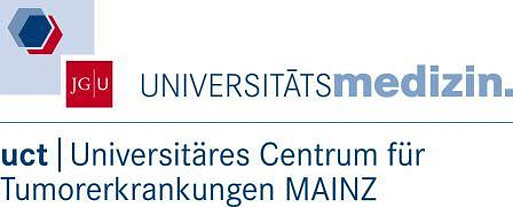
Head and Neck Tumor Center
The Department of Otolaryngology and the Department of Oral and Maxillofacial Surgery form the Head and Neck Tumor Center as part of the University Center for Tumor Diseases (UCT-Mainz) of the University Medical Center Mainz.
Tumor diseases
(Kopie 5)
Head and neck cancers represent the 6th most common cancer entity with 640.000 new cases diagnosed annually worldwide. Typically, these carcinomas are discovered in advanced stages with pre-existing locoregional metastases or distant metastases. Consequently, the 5-year survival rate averaged for all localizations and tumor stages has been relatively stable at just below 50 % for many years. On the other hand, small localized tumors (e.g. vocal cord cancer) can be cured with a probability of over 90 % in the long term.The second large group of malignant changes originate from the lymphatic tissue (lymphomas and leukemias), which first appear in the head and neck region in about 45 % of cases. In addition, there are a large number of rarer malignancies that can originate from glandular tissue (salivary gland carcinomas, thyroid carcinomas), connective tissue (sarcomas), nerve tissue, cartilage or bone tissue, or skin (melanomas, basaliomas). Tumors of the nose, paranasal sinuses and skull base are also treated in our Head and Neck Tumor Center.
Favouring factors for cancer development in the head and neck area
- Smoking
- Alcohol
- Poor dental hygiene
- Viral infections (especially human papilloma virus)
- Dust exposure (sawdust from hardwoods especially sinus tumors)
- Hereditary exposure (especially lymphomas)
Treatment
For the initial examination, we have a wide variety of angled optics and flexible endoscopes at our disposal to detect even the smallest changes in the throat or larynx. For the throat examination, we use the most modern ultrasound equipment. If a malignant disease is suspected in the area of the upper airway and oesophageal passages, an endoscopic examination with tissue sampling under gerneral anesthesia as well as sectional imaging to determine the extent is performed in the vast majority of cases.Depending on the tumor stage and type, therapy is carried out in close cooperation with the UCT of the University Mecial Center Mainz.
Form of therapy are:
- Surgery
- Radiotherapy
- Chemotherapy
The particular difficulty in the treatment of these malignant changes is due to the agressive and rapid growth as well as the destruction of elementary functions (speaking, breathing and swallowing). Basically, the therapy consists of 5 pillars and their combination.
(Kopie 8)

Treatment strategies
Several treatment strategies are available for the treatment of squamous cell carcinoma and most other cancers of the head and neck. Surgical therapy ist usually the primary approach. Two conditions must be met when surgery is performed:- Oncologic control: The tumor must be completely removed.
- Preservation of tunctional units: Important functional structures for speaking, swallowing and breathing that are not diseased must be spared or preserved by appropriate reconstructive techniques.
For example, various techniques of laryngectomy, especially minimally invasive laser surgery, are used. To restore functional units, tissue must sometimes be transplanted. For this purpose, all plastic and microsurgical procedures are used in our clinic (e.g. free transfer of a forearm graft but also pedicled crafts from the immediate environment).